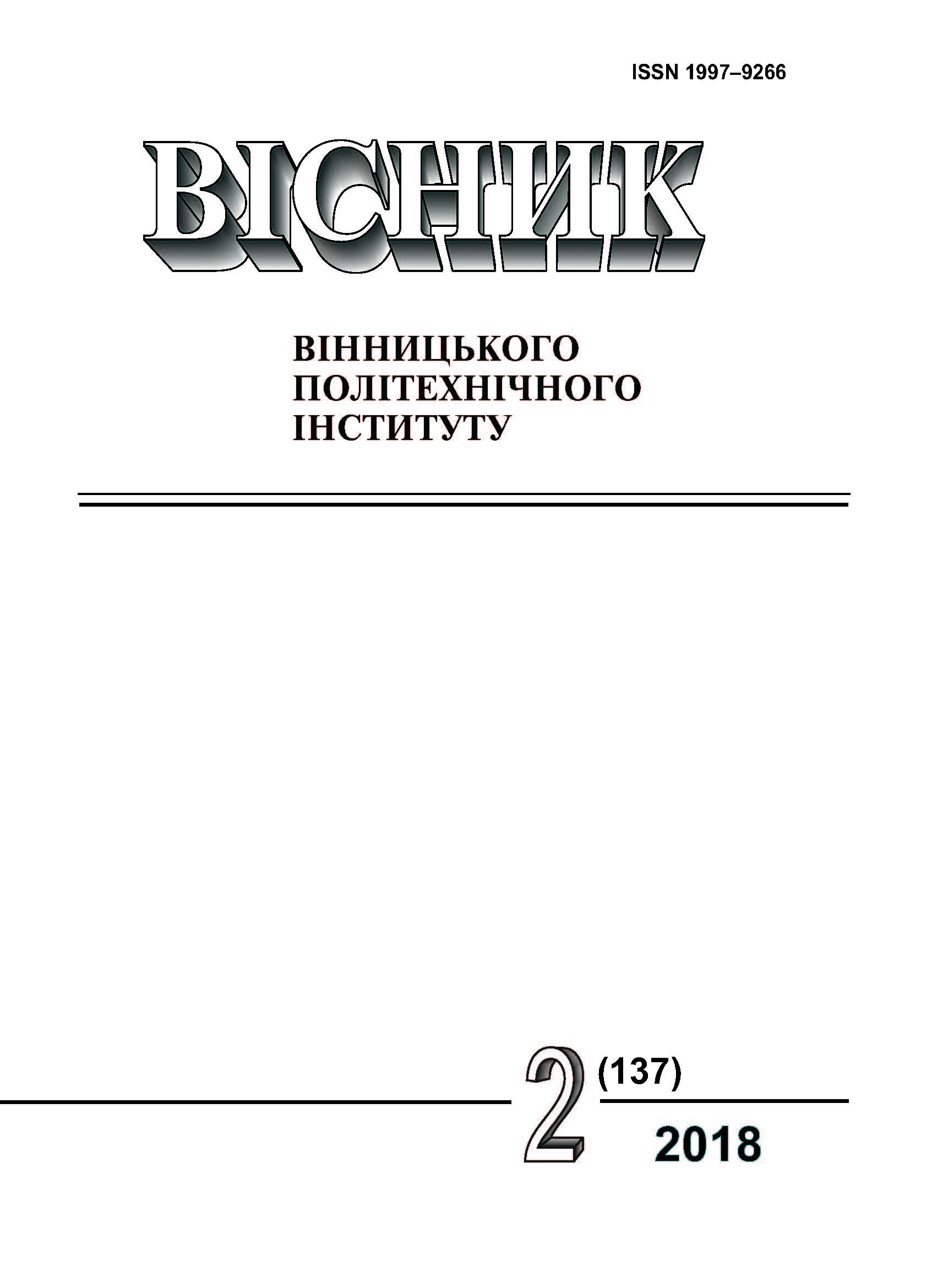Multispectral Measurements of Phytoplankton Biomass in Aqueous Media for Environmental Control Purposes
Keywords:
multispectral method, aqueous media, spectral characteristics, biomass, phytoplanktonAbstract
The aim of the work is to increase the accuracy of indirect measurements of phytoplankton biomass in natural water bodies on the basis of the results of multispectral measurements using various options for implementing environmental monitoring tools. The inverse problem of indirect measurement of phytoplankton biomass in natural water bodies is solved based on the results of multispectral measurements. The analysis of errors in biomass measurements of phytoplankton in natural water bodies is carried out under various options for the implementation of environmental monitoring tools. When studying aquatic ecosystems, considerable attention is paid to phytoplankton, as the main producer of primary organic matter. To assess the trophic status and ecological control of the quality of the waters of natural water bodies, phytoplankton parameters such as abundance, biomass, the content of chlorophyll and other pigments in the raw mass of phytoplankton, the ratio between the main pigments that allow us to evaluate the production-degradation processes in the aquatic ecosystem are used. As a result of solving the inverse optical problem of determining phytoplankton biomass in natural water bodies on the basis of multispectral measurements, regression equations have been obtained, which allow to indirectly measure the biomass of phytoplankton when used in environmental controls. In the course of multiple regression, the number of spectral channels of the multispectral measurement instrument is obtained, as well as the methodical error, which is determined by how accurately the regression equation allows indirectly measuring the biomass of phytoplankton. Thus, when light emitting diodes and laser diodes were used in the radiation source, 7 and 8 spectral channels were obtained, respectively. When using a monochromator as a radiation source, only 3 spectral channels are obtained. The value of the methodical measurement error, which is determined by the regression equation, is obtained less than the instrumental error, which is determined by the analog-to-digital conversion and the CCD camera noise. The general error of the indirect measurement of phytoplankton biomass in natural water bodies is calculated on the basis of multispectral measurements, which was from 0.167 to 0.397% for various versions of the measuring instrument.
References
V. Petruk et al., “The method of multispectral image processing of phytoplankton processing for environmental control of water pollution,” Proc. SPIE, Optical Fibers and Their Applications, vol. 98161N, рp. 1-5, December. 2015. doi: 10.1117/12.2229202.
V. Martsenyuk et al., “Multispectral control of water bodies for biological diversity with the index of phytoplankton,” in 2016 16th International Conference on Control, Automation and Systems (ICCAS 2016), Gyeongju, Korea, 2016, рp. 988-993.
V. Petruk et al., “Experimental studies of phytoplankton concentrations in water bodies by using of multispectral images,” in Water Supply and Wastewater Removal. Lublin, Poland: Lublin University of Technology, 2016, рp. 161-171.
P. Symvoulidis et al., “Serial sectioning and multispectral imaging system for versatile biomedical applications,” in IEEE International Symposium on Biomedical Imaging (ISBI), Beijing, China, 2014, рp. 890-893.
R. M. Kudela et al., “Application of hyperspectral remote sensing to cyanobacterial blooms in inland waters,” Remote Sensing of Environment, no. 2, рp. 1-10, 2015.
S. Shi et al., “Improving Backscatter Intensity Calibration for Multispectral LiDAR,” Geoscience and Remote Sensing Letters, IEEE, vol. 12, no. 7, рp. 1421-1425, 2015.
V. Starovoitov et al. “Multispectral image enhancement based on fusion and super-resolution,” in 15th European Signal Processing Conference, Poznan, Poland, 2007, рp. 2174-2178.
В. В. Барун и др. “Моделирование влияния эпидермиса на перенос света и тепла в кожном покрове,” на 12-й Международной молодежной научной школе по оптике, лазерной физике и биофотонике “Проблемы оптической физики и биофотоники”. Саратов, РФ: Новый ветер, 2009, с. 69-78.
Э. П. Зеге, А. П. Иванов, и И. Л. Кацев, Перенос изображения в рассеивающей среде. Минск, СССР: Наука и техника, 1975. 327 с.
S. Ustin et al., “Retrieval of Foliar Information about Plant Pigment Systems from High Resolution,” Remote Sensing of Environment, vol. 113, рp.67-77, 2009.
С. М. Кватернюк, «Метод та засоби мультиспектрального телевізійного вимірювального контролю стану неоднорідних біологічних середовищ,» Вісник Вінницького політехнічного інституту, № 1, с. 15-22, 2017.
А. А. Большаков, Р. Н. Каримов, Методы обработки многомерных данных и временных рядов. Москва, РФ: Горячая линия-Телеком, 2007, 522 с.
Л. И. Дубровская, Г. Б. Князев, Компьютерная обработка естественно-научных данных методами многомерной прикладной статистики. Томск, РФ: ТМЛ-Пресс, 2011, 120 с.
В. Денисенко. «Суммирование погрешностей измерений в системах автоматизации,» Современные технологии автоматизации, № 1, с. 92-100, 2012.
С. М. Кватернюк, «Забезпечення екологічної безпеки стічних вод за допомогою мультиспектрального контролю їх токсичності з використанням біоіндикації по фітопланктону,» Вісник Вінницького політехнічного інституту, № 6, с. 9-16, 2017.
Downloads
-
PDF (Українська)
Downloads: 115
Published
How to Cite
Issue
Section
License
Authors who publish with this journal agree to the following terms:
- Authors retain copyright and grant the journal right of first publication.
- Authors are able to enter into separate, additional contractual arrangements for the non-exclusive distribution of the journal's published version of the work (e.g., post it to an institutional repository or publish it in a book), with an acknowledgment of its initial publication in this journal.
- Authors are permitted and encouraged to post their work online (e.g., in institutional repositories or on their website) prior to and during the submission process, as it can lead to productive exchanges, as well as earlier and greater citation of published work (See The Effect of Open Access).





